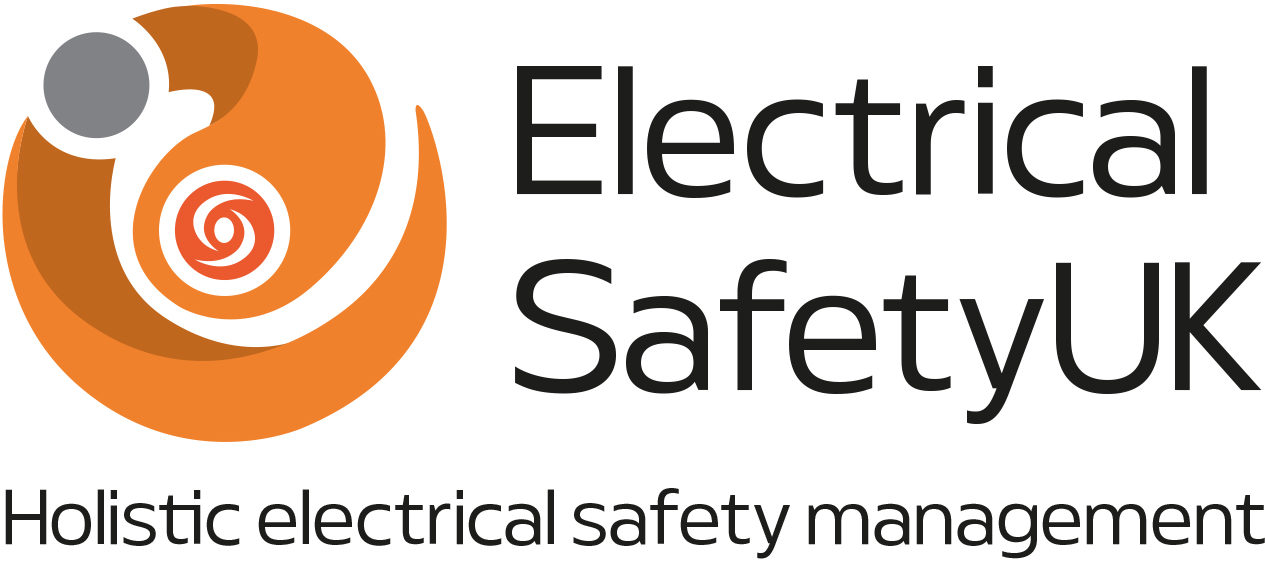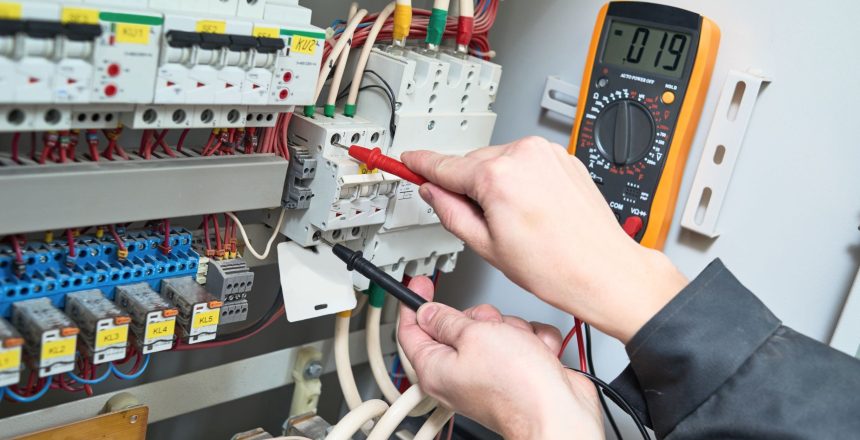By Paul Hopton – Principal Consultant
Tel: 0333 554 3465
Our business Electrical Safety (UK) has helped many companies review and improve their Electrical Safety Management System (ESMS).
We are often asked, what an ESMS should contain. This question has prompted me to write a series of articles looking at the different aspects of these vital documents. Here is the second article in that series.
In my first article, we looked at your Electrical Safety Policy as the foundation stone for your ESMS, and this article looks at the next key document in your ESMS, your Electrical Safety Rules.
Introduction
Your Electrical Safety Rules (ESRs) set out practical requirements for managing electrical safety. The major factors affecting electrical safety are the voltage, current and frequency associated with the equipment and how the work is carried out. The scope of the ESRs should be limited by Voltage level, typically for a factory or similar installation up to and including 11kV, but this depends on the highest voltage on your installation. There are two main electrical hazards: electric shock and arc flash.
Your ESRs should be written to manage these two hazards and apply to all equipment that use electricity, concentrating on the Dangers which may be present irrespective of equipment type. It is not unusual for ESRs to include supplementary documentation as appendices to address topic-specific areas of electrical safety, such as excavations, phasing out etc. Usually, the ESRs apply to all operations excepting only those areas excluded through an Approved Operating Agreement relating to a tenancy, adoption, or third-party ownership where equivalent rules are in place. The ESRs do not apply to equipment not connected to an electrical distribution system unless specified in site-specific instructions. The ESRs state the minimum requirements to be complied with.
Responsibilities
The ESRs should provide an overview of the Electrical Organisation that is responsible for managing electrical safety. Typically, you would identify the electrical duty holder and key roles within the business, such as the Chartered Electrical Engineer, SHE Manager and authorised persons. You could use an organogram with a summary of responsibilities for each role to give an overview of how your organisation manages electrical safety. To support this organogram, it would be sensible if you then went on to provide further detail and clarity on the roles and responsibilities for electrical safety management of each position in the organogram, as well as other key roles in your organisation.
Definitions
A list of definitions should be included in your ESRs so that key terms used in the rules are correctly defined. Some examples might be:
- Danger – A risk to health and bodily injury.
- Dead – At or about zero voltage, Isolated from any Live system and not charged.
- Earth – The conductive mass of the Earth, whose electric potential at any point is conventionally taken as zero.
- Earthed – Connected to Earth through switchgear with an adequately rated Earthing capacity or by Approved Earthing leads.
General Safety Precautions
You could include a section on general safety precautions which gives your requirements, for example, on the following:
- The maintenance of General Safety at and in the vicinity of the place of work
- Accidents and Incidents
- Training and Appointment
- System and Equipment Identification
- Records for permits/risk assessments/authorisation certificates/etc.: responsibilities and how long the records should be kept for
- Electrical Safety Certificates (HV Systems): e.g. HV Permit-to-work, Sanction-for-Test, etc.
- Documentation Control and Audit Review
- Approval of New Equipment
- Obsolete/Redundant Cables and Equipment
- Inspection and test of electrical installations and portable electrical tools and Apparatus
- Safety Locks, Interlocks and Keys
- Contractors and third parties
- Failure of Supply
- Remotely and Automatically Controlled Equipment
- Tools and Test Equipment
Work on or near Live Conductors
Work on or near live conductors should comply with the Electricity at Work Regulations 1989. Nearly all Company Safety Rules will reproduce in some form or another, the guidance from the UK Health and Safety Executive on this subject. But typically, in this section of your ESRs, you would be stating your requirements for the following:
- Work on or near Live Conductors – Isolate, if possible. Is it unreasonable for the equipment to be Dead; and is it reasonable for work to be carried out on the equipment while it is Live; have suitable precautions been taken to prevent injury
- Categories of Live Work – different types of work and who should approve it
- Assessment Procedure for Working Live or Dead – it can be helpful to include a flow diagram to help in the decision-making process and provide guidance to electrical personnel
- Test Procedures – consider if Danger can arise whilst testing and how you will approve this type of work as well as what precautions are necessary
- Testing High Voltage (HV) Equipment
- Access to Prescribed Areas – which are sections or parts of a site that are specifically assigned for electrical use only, for example electrical sub-stations; electrical switchrooms; and electrical testing areas
- Live Equipment – control of access and ensuring the safety of personnel who could come in to contact with the equipment
- Test Equipment and Special Tools and Equipment
HV Equipment
This part of your ESRs would typically consider your requirements in the following areas:
- Access to Substations and Switchrooms – control of entry, signage and who is allowed in these areas
- Working in Sub-stations or Switchrooms – Accompaniment and building maintenance activities could be considered
- Working Space, Access and Lighting
- Switching Operations – rules around who can switch and when switching programs and accompaniment should be considered
- Work on HV Equipment – what are the prerequisites for work, e.g. approval, isolation, earthing and safe systems of work (permits)
- Phasing Out Equipment
- Neutral Conductors
- Distribution System Earths – ensuring they remain connected and what controls need to be in place if they are to be disconnected
- Electrical Protective Relays – adjustments and approval to adjust
LV Distribution Equipment
Subjects covered in this part of the rules could include:
- LV Distribution Equipment – define what LV Distribution Equipment is, what are the boundaries
- Functional Testing of In-service Equipment
- Work on LV Distribution Equipment – what are the prerequisites for work, e.g. approval, isolation and safe systems of work (permits)
- Uninterruptable Power Supplies (UPS)/Dual Fed Equipment
Generating Plant
Your requirements for using mobile generators to provide power to part of the site electrical system and how that will be approved. Portable generator operation within a building, enclosed space or enclosure. Earthing requirements for mobile generators.
Cables and Underground Cables
This topic should consider work on or near cables, including isolation, identification, safe systems of work (permits), earthing of HV cables and cable spiking. It may be appropriate to have an appendix or separate document devoted to controlling cable spiking equipment, competency, and activities. Underground Cable requirements should consider approval for interference with underground cables or markers (e.g. tape or tiles) and who is responsible for approval of that type of work, typically a Senior Authorised Person.
Fire Protection for Electrical Equipment
Included in this topic is your policy concerning fixed detection and extinguishing systems (including automated systems) and the controls that may be necessary for these types of system. Portable Equipment should be considered, including what types of extinguishers can be used on electrical equipment and what types should be in the vicinity of electrical equipment.
Construction Sites and Temporary Installations
Construction supplies and their use should be considered and the use of existing supplies should be restricted. Construction and decommissioning site electrical system design should consider the following:
- the location of overhead or underground services, the site topography and traffic routes
- load characteristics; demand, load centres, diversity and voltage requirements
- personnel protection and earthing systems
- system operation, modification (expansion/contraction and handover) and supplier interfaces
- selection of equipment compatible with the most arduous environmental conditions anticipated
- emergencies and power failure scenarios
Temporary Installations should be installed to recognised standards, e.g. IET Wiring Regulations. Maintenance and inspection of temporary installations should be carried out at a higher frequency determined by risk assessment.
Battery Banks
The requirements of battery banks could include the following:
- access controls, hazard warning notices and essential precautions for safety
- the measurement and control of explosive atmospheres
- personal protective equipment and special tools
- arrangements for washing or eye irrigation equipment
- work on batteries treated as work on or near live conductors
Transformers
Your ESRs may need to address some or all of the following:
- Isolation and Earthing – isolation of windings and earthing of HV windings
- Tap Selection Switches – locking of tap position and controls for off-load tap changers
- Drain Valves – locking
- Withdrawable Transformers – locking
- Transformers in Parallel – consider elevated fault levels
Procedures for Safety Documentation
Rules and requirements for the use, issue, cancellation and temporary withdrawal of the following:
- Limitation-Of-Access
- HV Permit-To-Work
- Sanction-For-Test
- Isolation Certificat
Many other subjects could be included in your ESRs, such as capacitors, lighting columns, ageing and obsolete equipment, portable electrical Apparatus, electrical authorisation etc. However, it often makes sense to have stand-alone procedures for these additional electrical safety topics. As this series of articles continues, I shall look at some of these supporting procedures in more detail.





